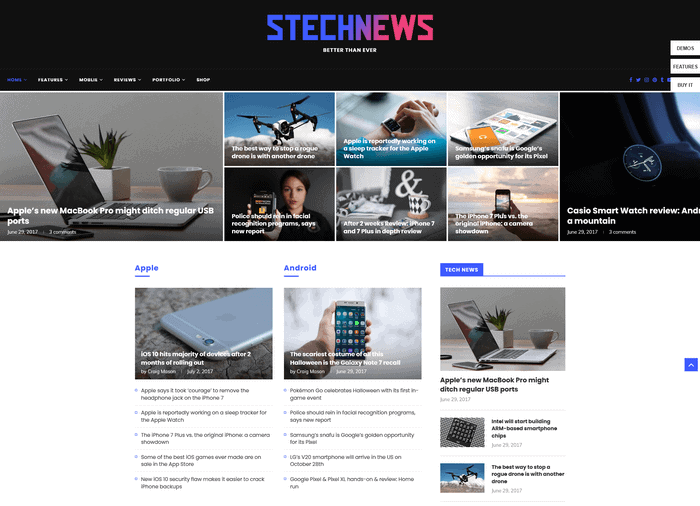Understanding the Surge of Side Computer in Today's Digital World
In the swiftly evolving landscape of technology, edge computer arises as a pivotal pressure, reshaping just how information is processed and utilized. By transitioning information monitoring closer to the source, side computer addresses essential latency issues while maximizing data transfer usage and boosting safety and security actions.
What Is Side Computer
Side computing, although a relatively recent innovation in the realm of technology, essentially changes exactly how information is processed and managed by bringing computation and information storage closer to the location where it is needed. Unlike typical cloud computer designs, which typically count on centralized data facilities that can be geographically far-off, side computing decentralizes information handling. This proximity lowers latency, improves real-time data handling, and boosts the total individual experience by guaranteeing much faster reaction times.
At its core, edge computer entails a network of local tools and facilities, such as routers, sensing units, and portals, efficient in refining data at or near the resource. This localized handling ability is particularly essential for applications needing immediate data evaluation, such as independent lorries, commercial automation, and clever cities. Furthermore, by unloading information handling tasks from main web servers, edge computer lowers transmission capacity needs and improves data personal privacy and safety and security, as sensitive info can remain on-site instead than passing through considerable networks.

Key Vehicle Drivers of Adoption
A number of factors are driving the adoption of side computing in today's electronic landscape. Side computing addresses this need by making it possible for information processing closer to the data resource, minimizing latency and improving real-time decision-making capabilities.
Another significant driver is the need for boosted bandwidth effectiveness. Central cloud systems can end up being overloaded with the large quantity of information generated by IoT gadgets, bring about traffic jams (Best tech blog). By refining information at the side, companies can minimize network blockage and boost general system efficiency
Furthermore, safety and security and privacy issues are pushing companies toward side computer. By processing sensitive information in your area, business can reduce risks connected with information transmission and exposure to possible cyber risks.
The rise of applications calling for real-time handling, such as self-governing automobiles and boosted truth, likewise demands the quick feedback times that edge calculating provides. Collectively, these chauffeurs are making side computing an essential component of modern IT framework, leading the way for its extensive adoption across different sectors.
Advantages Over Cloud Computing
How does side computer identify itself from typical cloud computer? Primarily, edge computer brings information handling closer to the source of data generation, frequently on close-by servers or neighborhood tools, rather than depending on centralized information.
Moreover, side computer enhances transmission capacity efficiency (Best tech blog). By processing data in your area, just the essential information is transmitted to the cloud for additional analysis or storage, reducing the quantity of data that passes through the network. This not just minimizes network blockage however likewise lowers information transmission expenses
Side computer also offers enhanced information personal privacy and protection. Delicate information can be processed in your area without being sent out to the cloud, minimizing the direct exposure to possible cyber hazards. This is particularly valuable for fields taking care of personal details, such as medical care and financial services.
Additionally, edge computing guarantees higher durability and dependability. Regional handling enables proceeded procedure even when connectivity to the cloud is endangered, keeping important features and services despite possible network disturbances. These advantages collectively show edge computer's transformative potential in optimizing performance and safety and security in electronic ecological view publisher site communities.
Considerations and obstacles
While side computing uses many advantages, it likewise provides unique obstacles and considerations that should be resolved to fully realize its possibility. Additionally, handling and checking a decentralized network of side gadgets can be complicated, calling for innovative tools and methods to guarantee smooth procedure and maintenance. Best tech blog.
Another consideration is the scalability of edge computing services. As the number of connected tools grows, so does the need for processing power at the side, which can lead to source constraints. Organizations must thoroughly plan their framework to fit this growth without jeopardizing efficiency or performance.
Interoperability is one more vital aspect. With numerous hardware and software program elements included, making certain compatibility and seamless integration can be tough. Standardization initiatives are vital to facilitate interaction between diverse systems.
Future Patterns in Side Computing
Expecting the future, edge computer is positioned to revolutionize different industries by enabling faster information processing and reducing latency. As the volume of data created by IoT tools remains to grow, side computer will certainly come to be significantly essential in handling this influx successfully. One substantial fad is the combination of expert system at the edge, enabling for real-time analytics and decision-making without depending on cloud-based sources. This shift is expected to boost applications in independent cars, smart cities, and health care, where prompt data handling is important.
An additional emerging pattern is the advancement of edge-native applications made particularly to utilize the one-of-a-kind capabilities of edge computing. These applications will maximize performance and resource usage, bring about raised effectiveness throughout numerous sectors. Improvements in 5G modern technology will even more bolster side computer by providing the required framework for high-speed, low-latency communication in between gadgets and edge nodes.
Final Thought
Edge computing's rise is driven by the proliferation of IoT Recommended Reading tools and the demand for real-time data handling, which boosts performance by reducing latency and decentralizing information administration. This method minimizes bandwidth ineffectiveness and safety and security concerns, helping with improvements in applications like independent automobiles and clever cities. Despite obstacles such as framework complexity and integration, the future of side computing assures a much more receptive electronic ecosystem, with proceeded technologies shaping its advancement and Full Report increasing its applicability throughout sectors.
Edge computer, although a reasonably current innovation in the realm of technology, basically changes just how data is processed and managed by bringing computation and data storage closer to the location where it is needed. Unlike standard cloud computing models, which usually count on centralized data facilities that can be geographically distant, edge computer decentralizes data handling. Additionally, by offloading data handling jobs from central servers, edge computing minimizes bandwidth requirements and boosts data personal privacy and safety and security, as sensitive details can remain on-site rather than traversing considerable networks.
